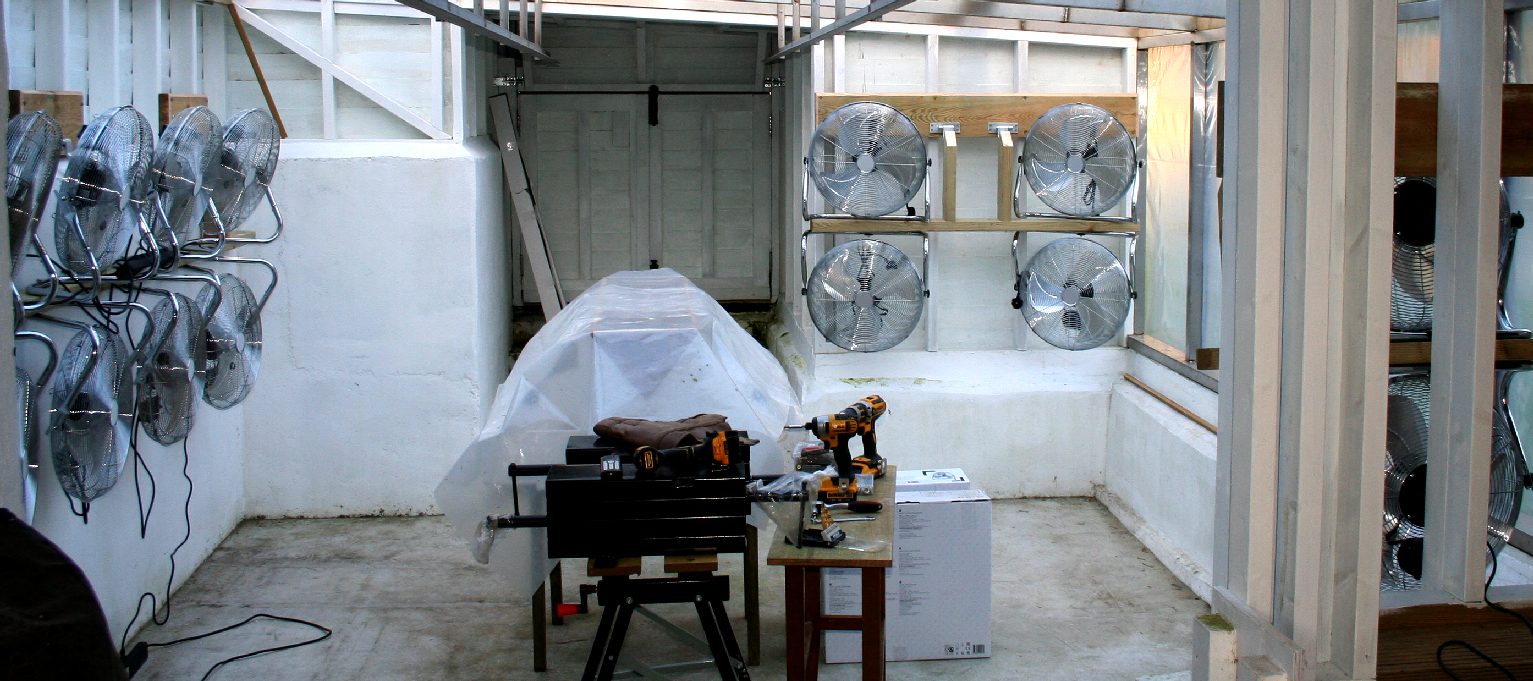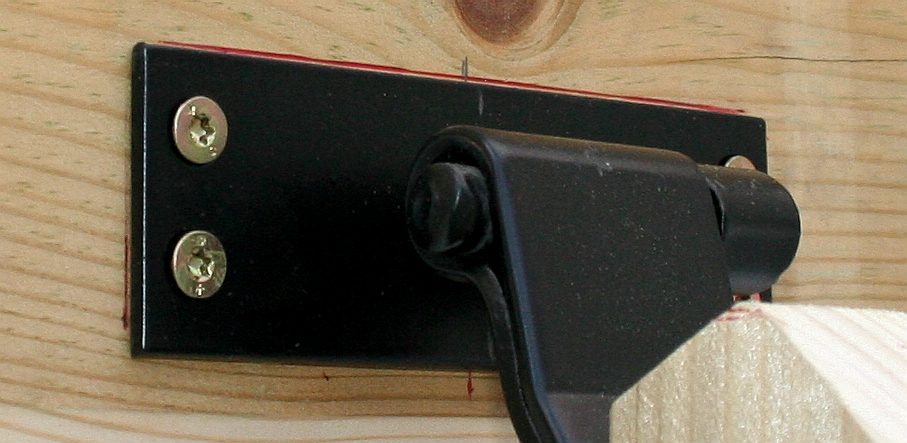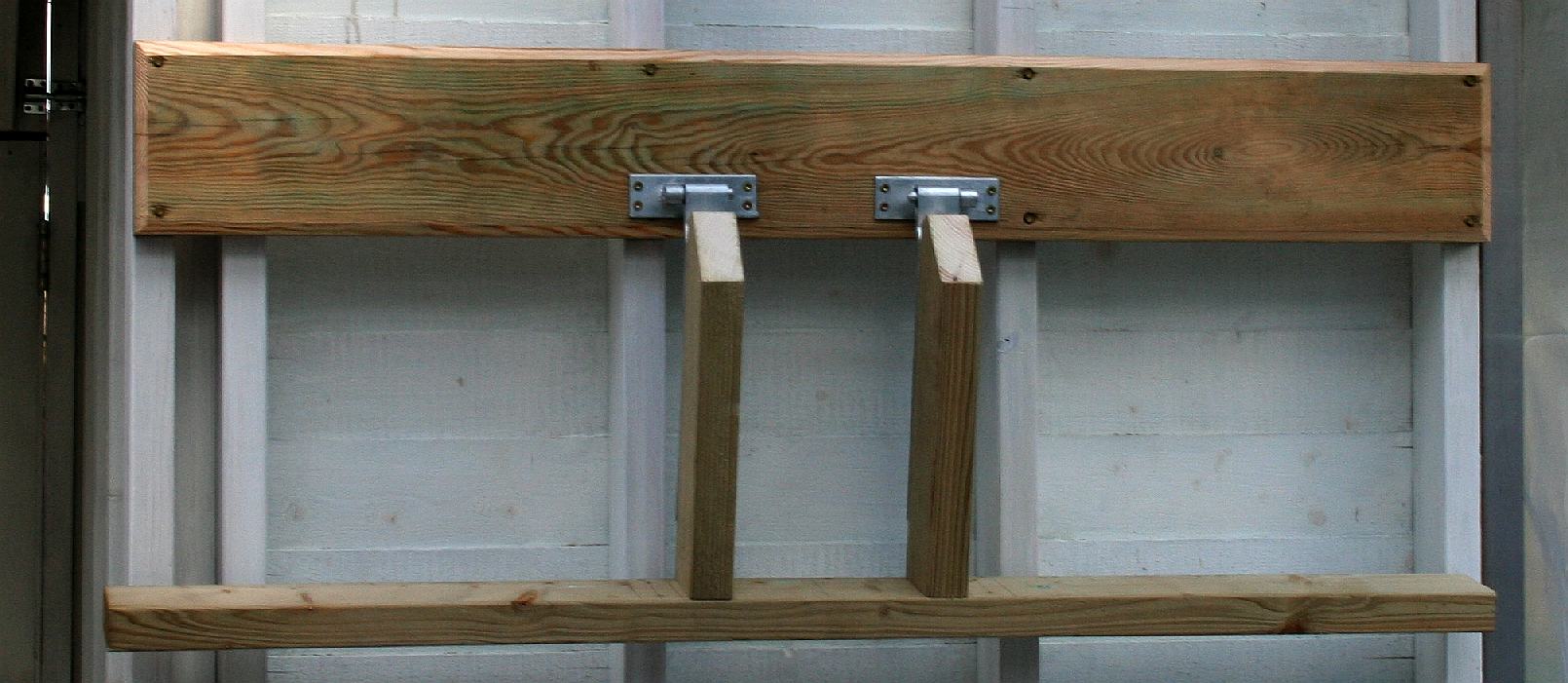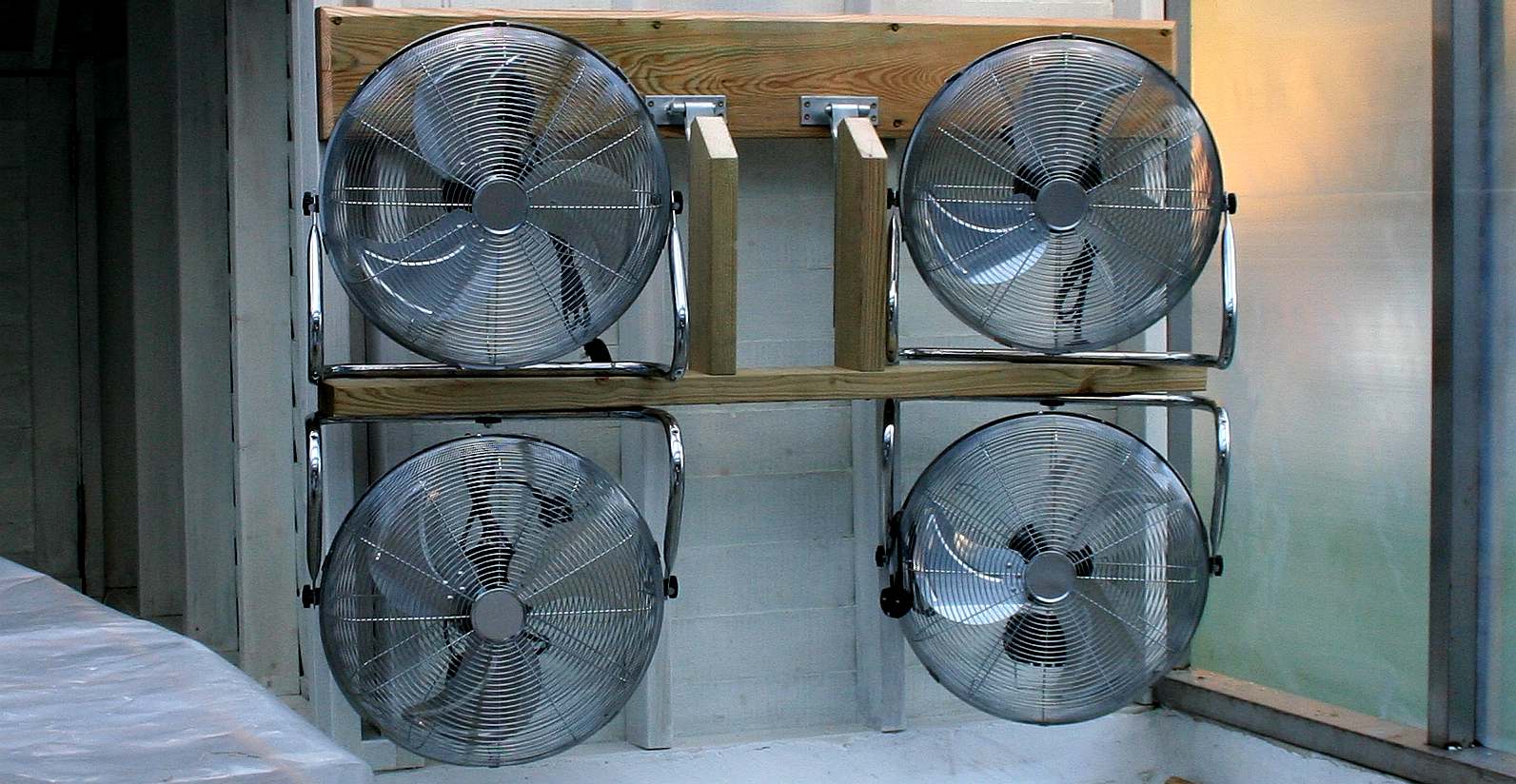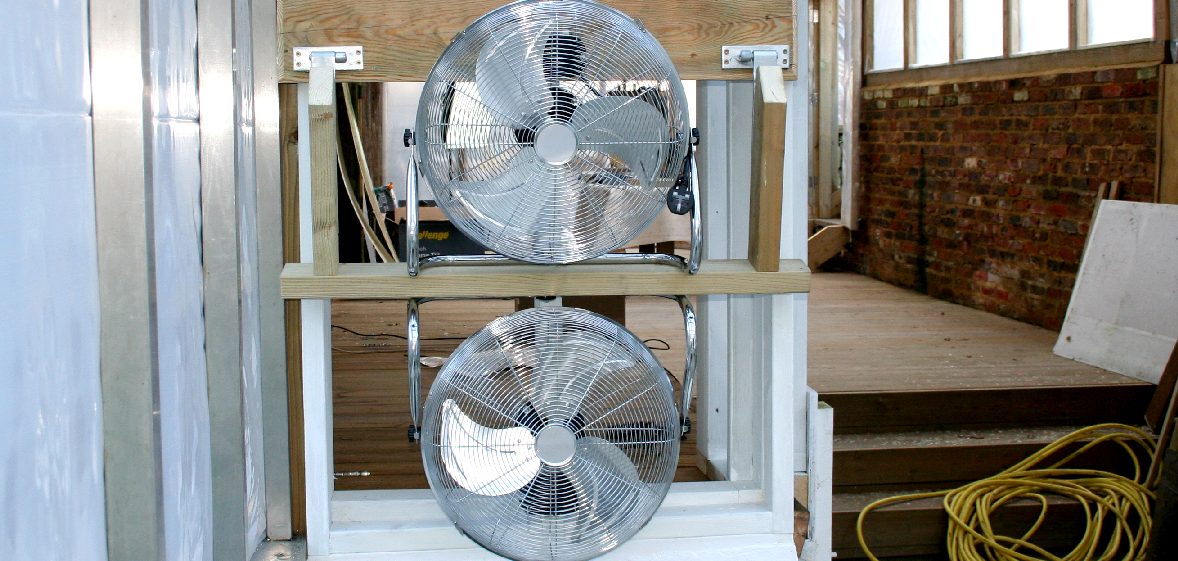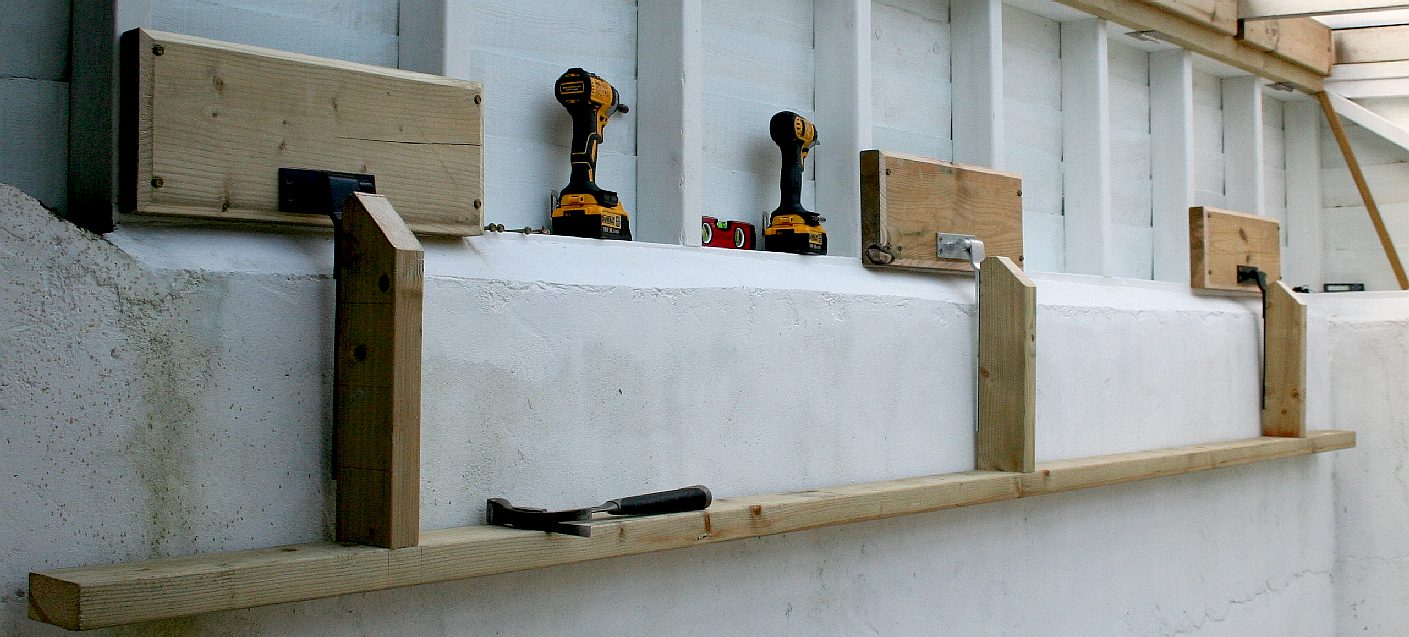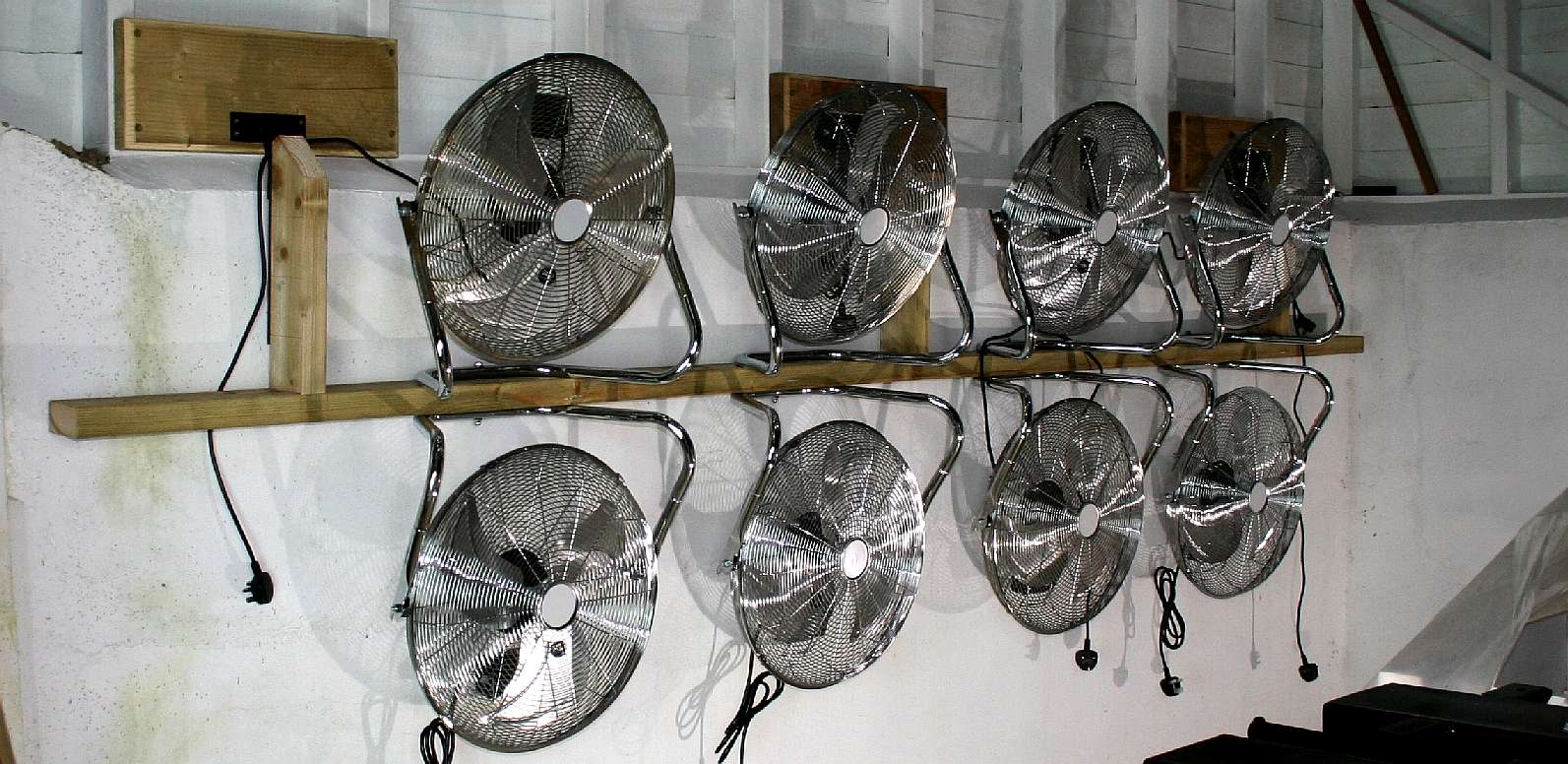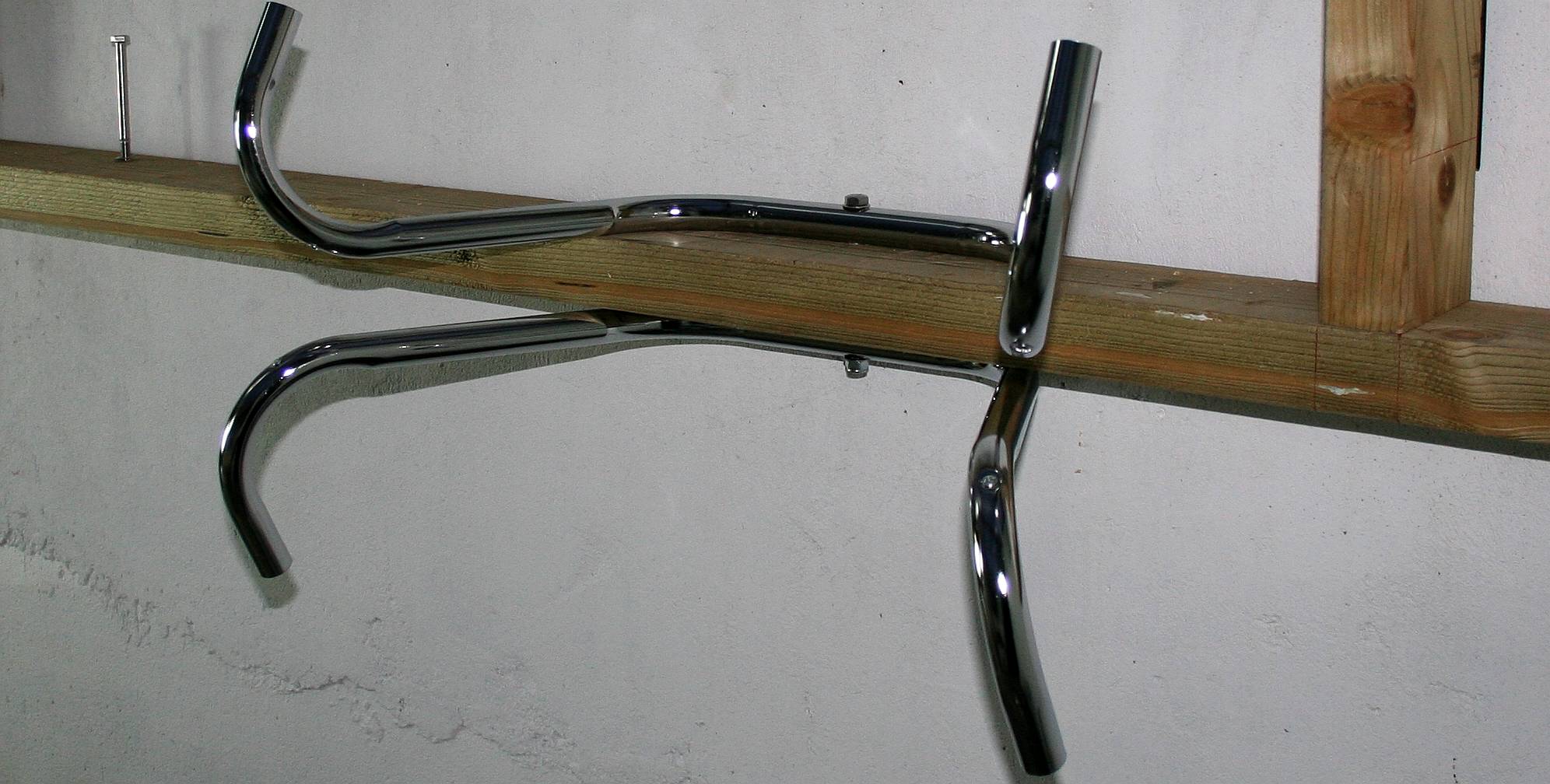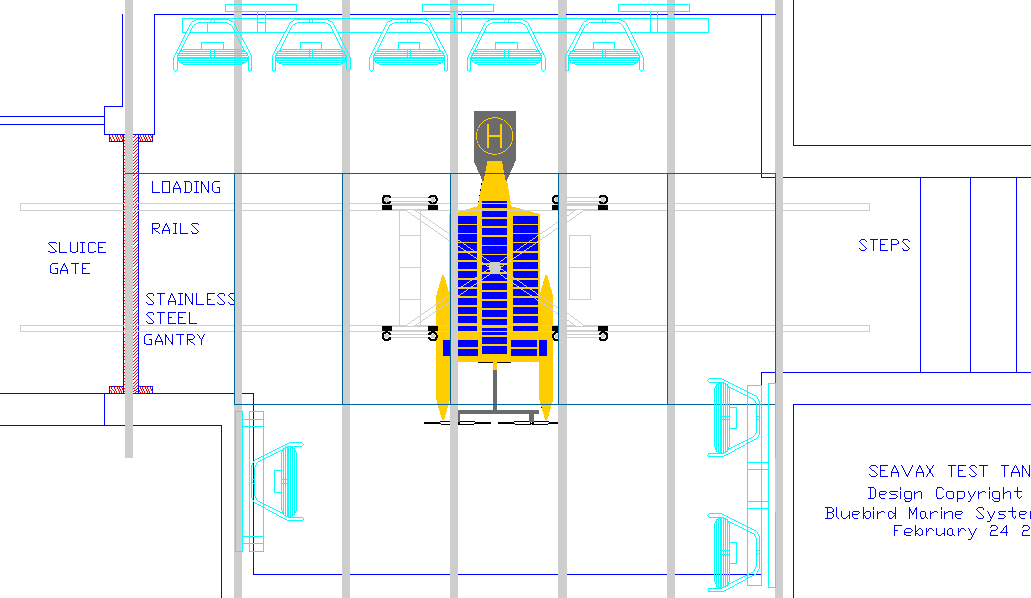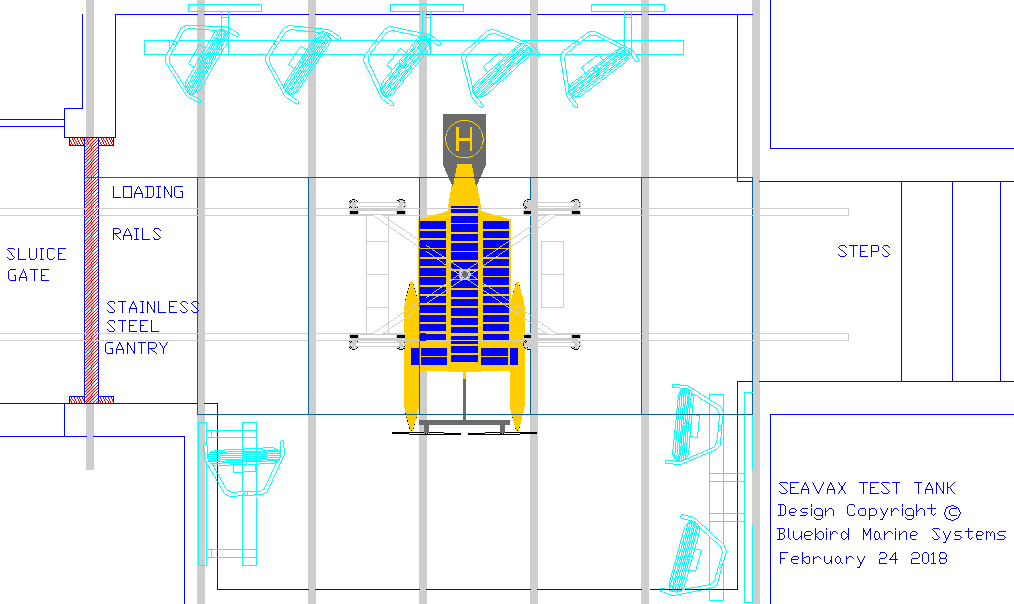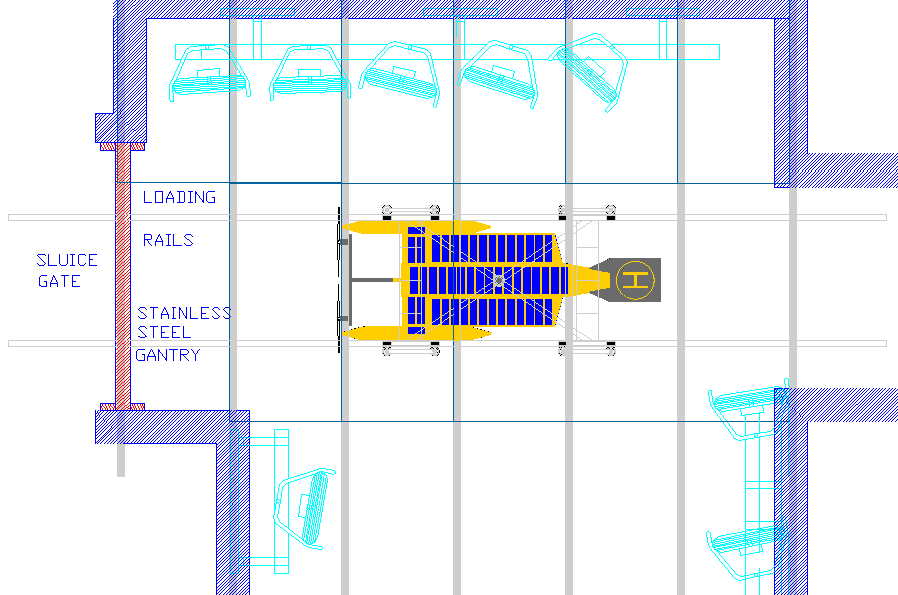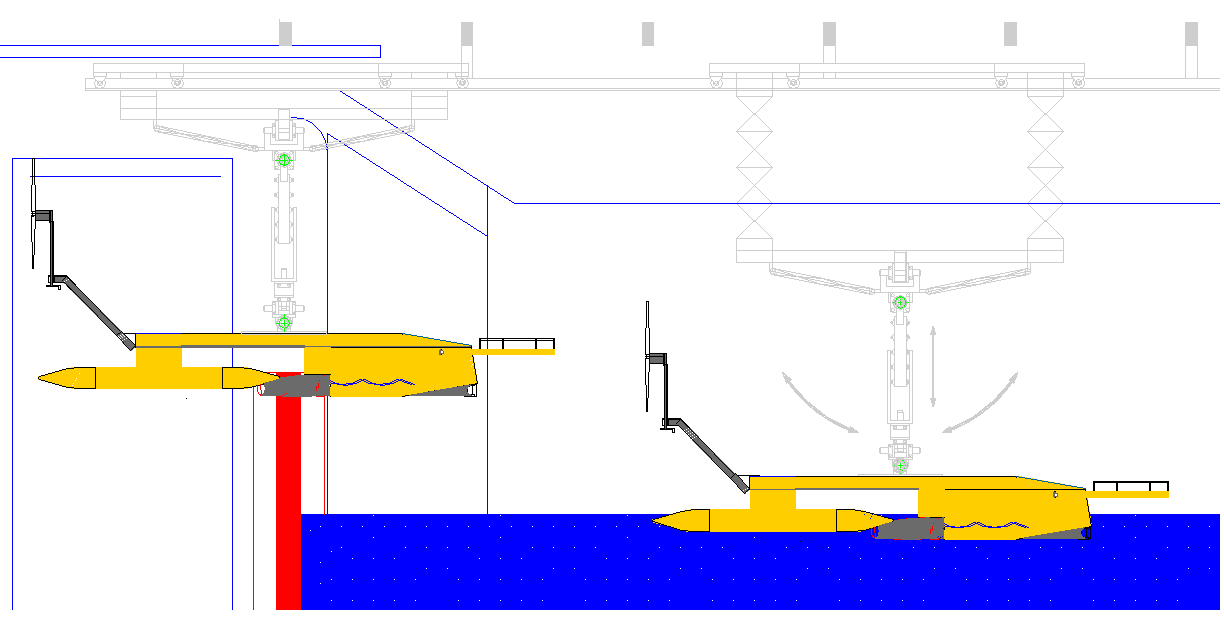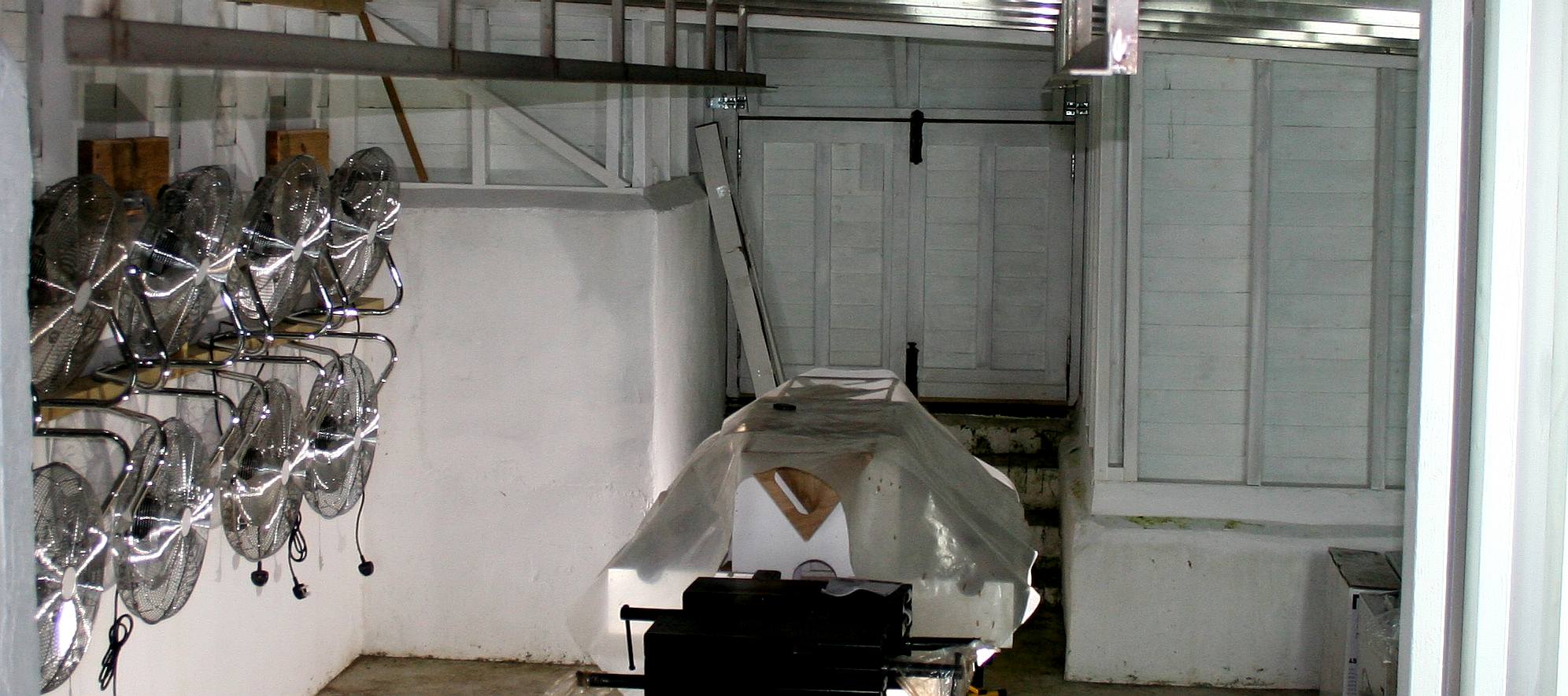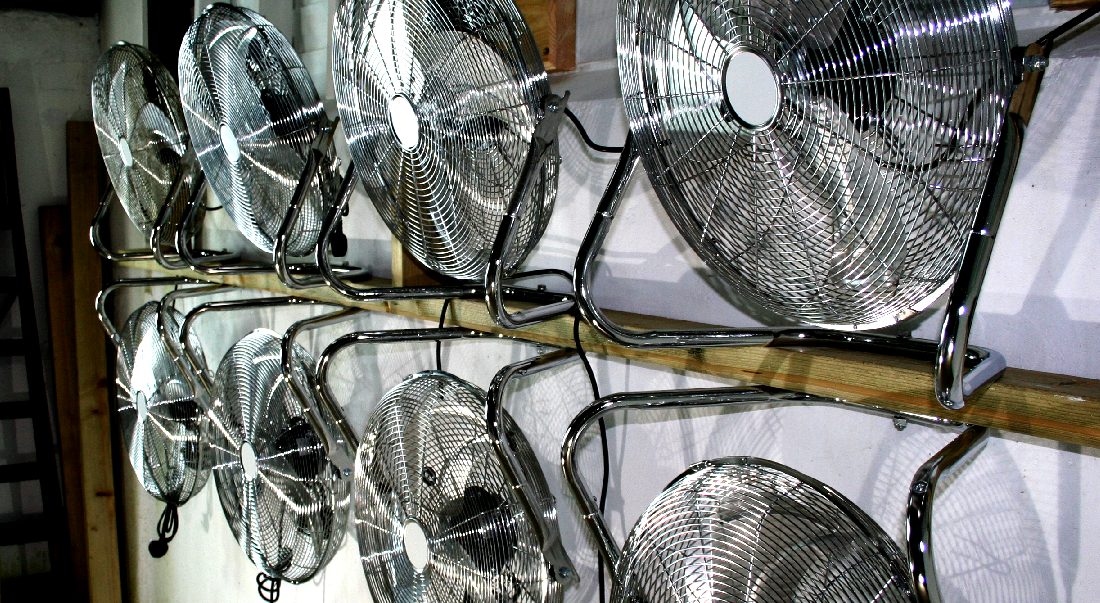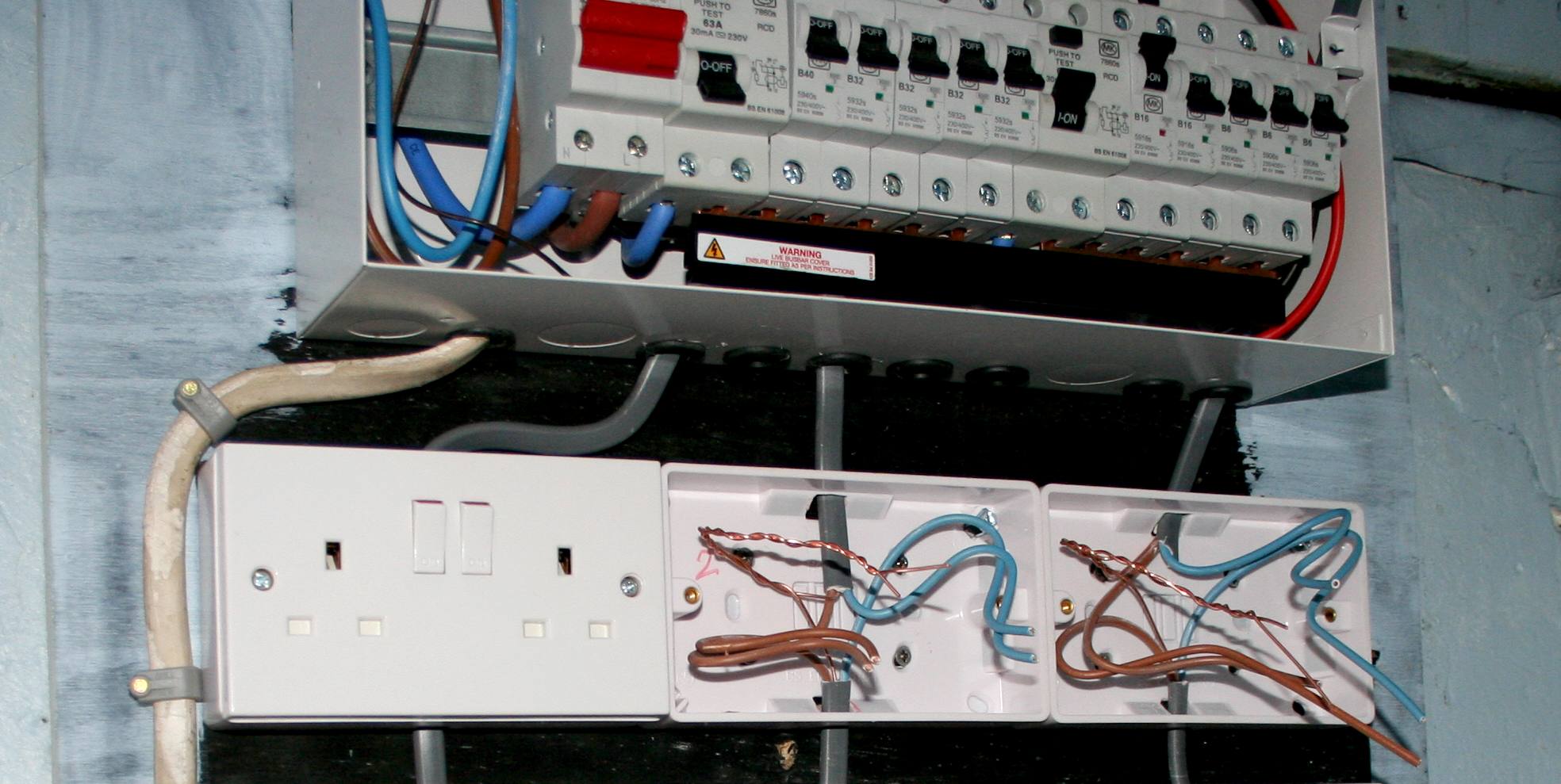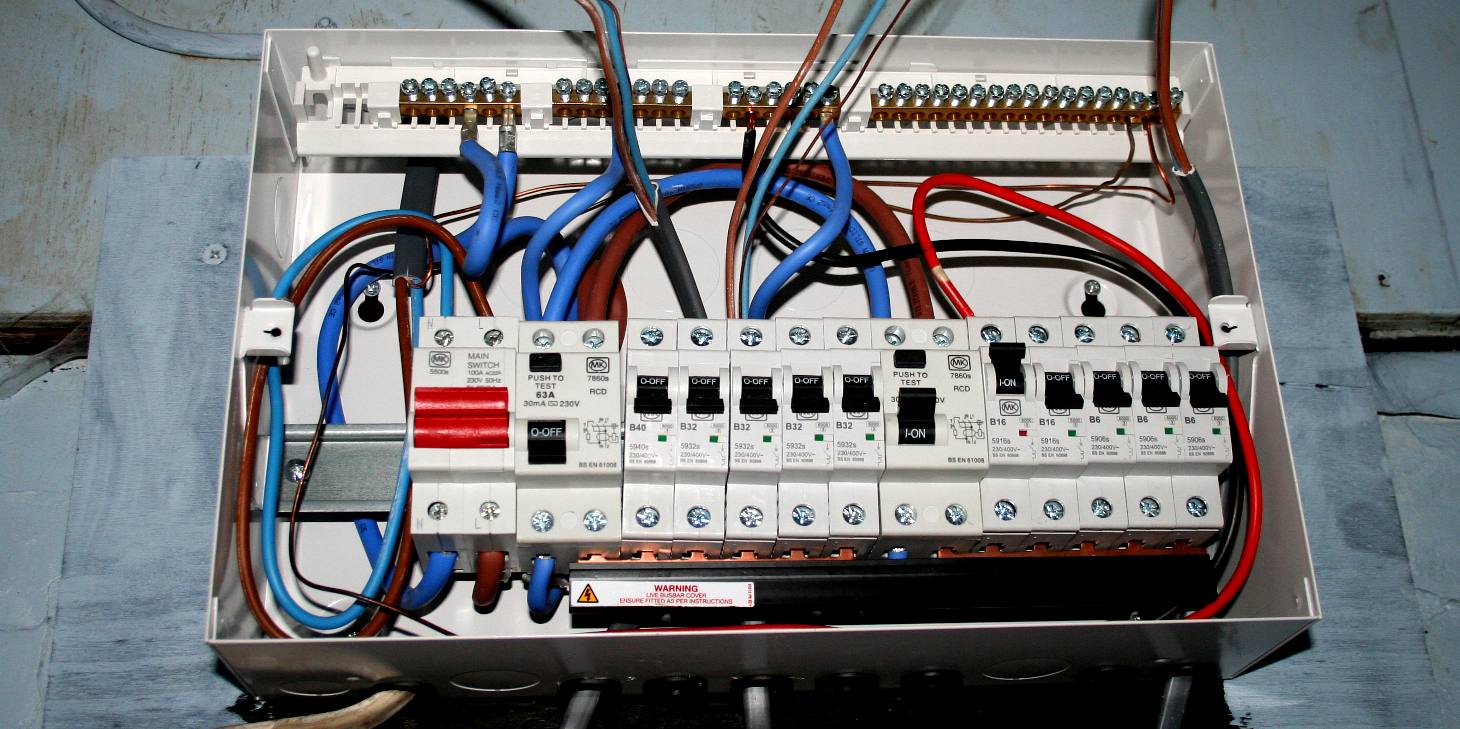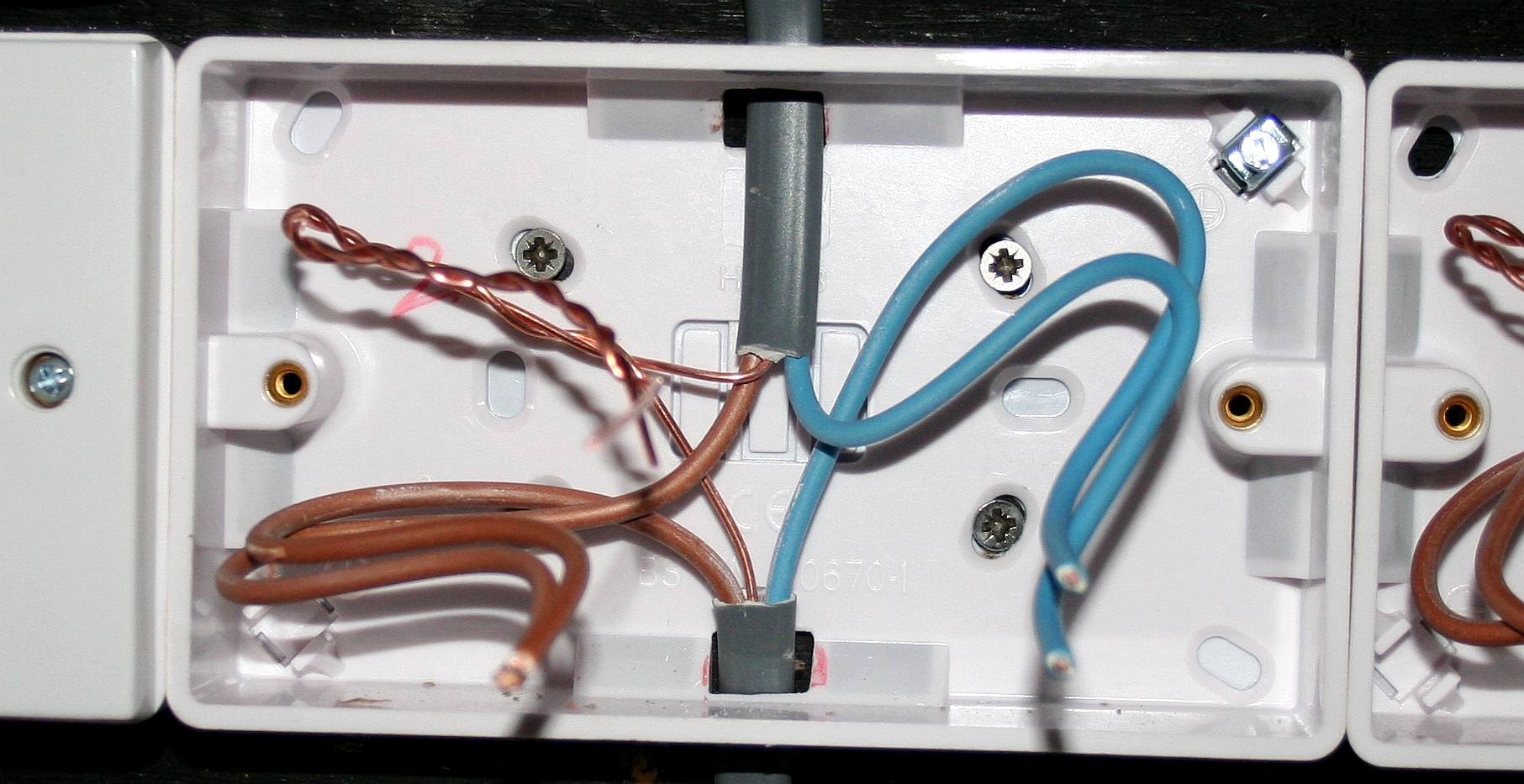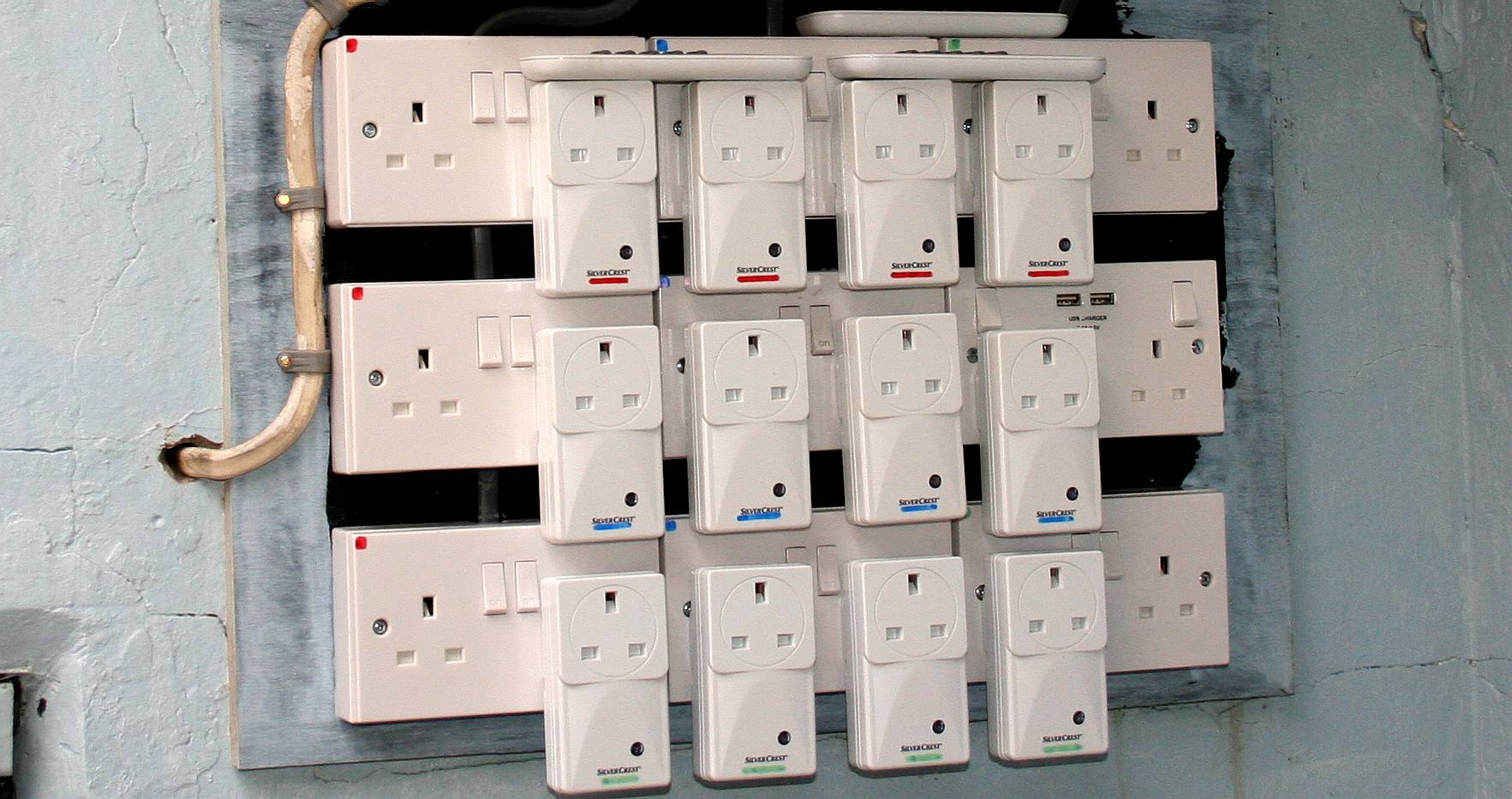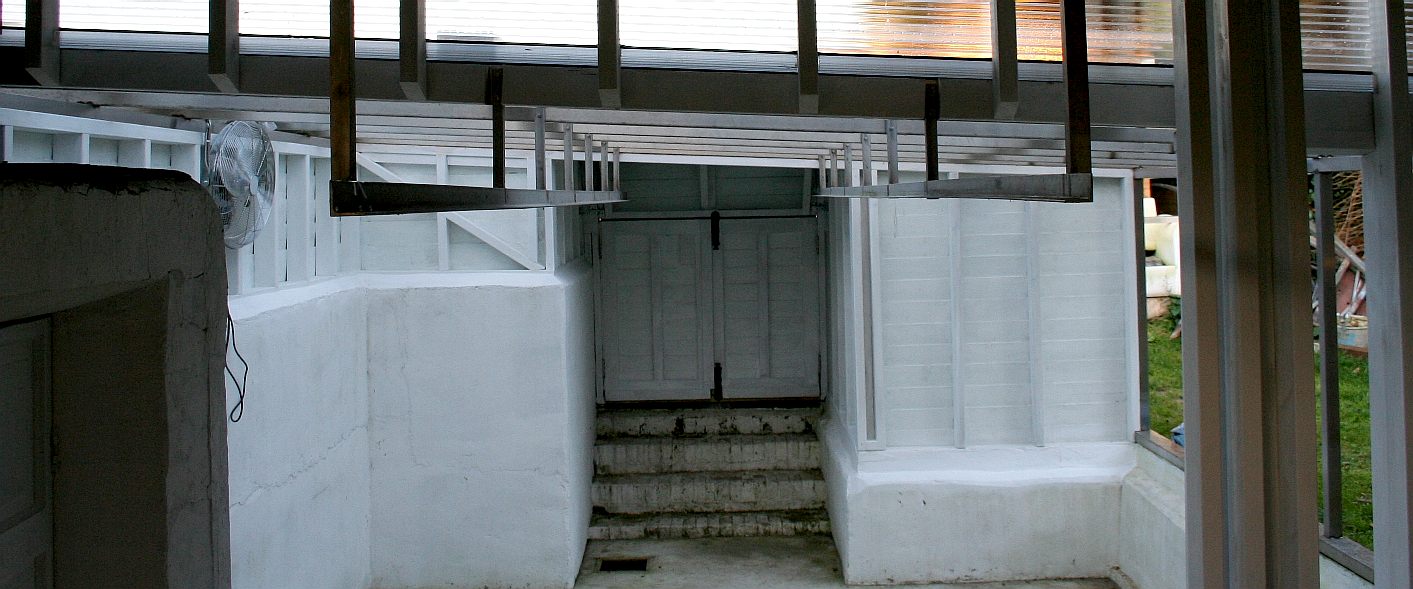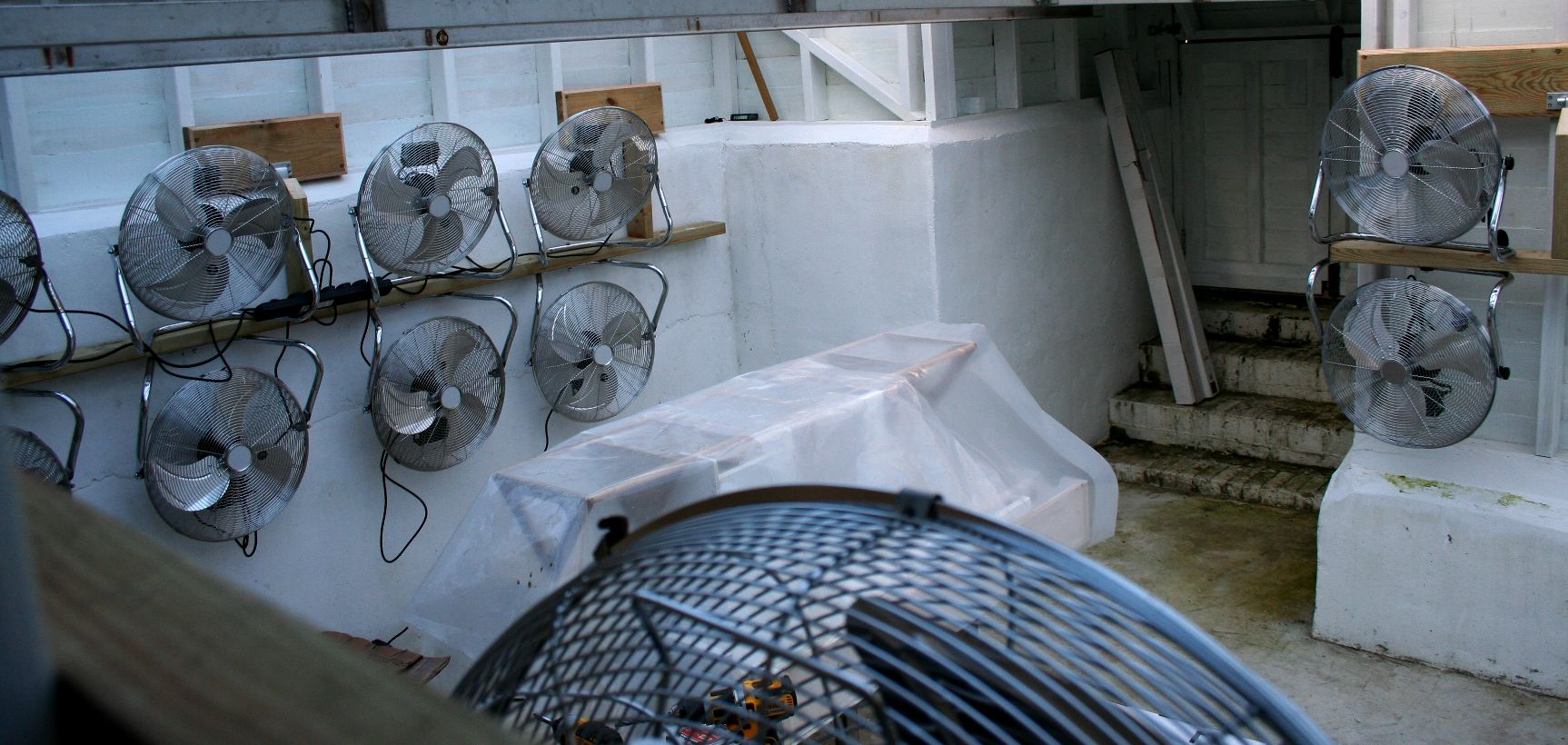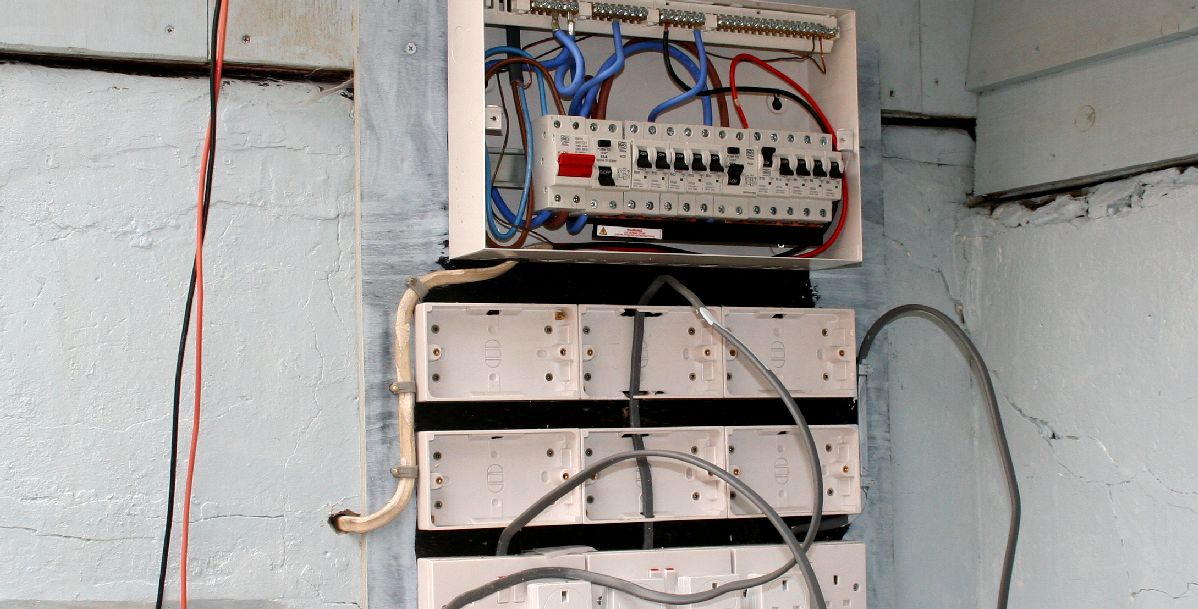|
FAN MOUNTINGS
ABOUT - CONTACTS - CROWDFUNDING - DONATE - FOUNDATION - HOME - A-Z INDEX
BRICKWORK - CARRIAGE - DRAINAGE - FACILITIES - FILTRATION - GLASS & PAINT - GANTRY - GIMBALS - HATCHES HYDRODYNAMICS HISTORY - INSTRUMENTS - LABORATORY - LAMINATING - LOGISTICS - OUR TEST TANK - PROOFING - REVIEWS - SCREED SEALING - SEAVAX TEST VIDEOS - SLUICE GATE - SLUICE MOTOR - SOLAR BATTERIES - WAVE MAKING - WINCH - WIND MACHINE - MOUNTINGS
FAN BANKS - In this picture you can see the bank of ten fans on the left of our test tank, four on the far wall and two on the near wall. The whole assembly can be lifted up and out of the way when wind is not needed for any of the tests. Wind testing is though very important where the SeaVax and the Elizabeth Swan (seen here under cover) are both powered by wind turbines and large solar arrays, or wings, that move to track the sun. In windy conditions the solar wings will act like sails and could overturn the vessel they are attached to if we do not run a series of scale tests to determine what are the safe working parameters.
The 'Elizabeth Swan' is a high-speed wave-piercing boat that could be used to set a new world record for solar boats one day, but is also the vessel in a series of eco adventure stories that are yet to be published - named after the character played by Keira Knightley in Disney's "Pirates of the Caribbean." Copyright © drawings February 23 2018. All rights reserved. You will need the permission of the Cleaner Ocean Foundation to reproduce these pictures except for educational use in classrooms, for homework projects, university lectures, or for private research.
We are on a tight budget again pending our next funding booster, and we know not where it will come from or if it will come at all - but we are sure of one thing, and that is that the world needs a machine like SeaVax to fight against a build up of marine litter. We won't let a temporary lack of funds stop us. Simplicity is key in any event. Take a look then at how we mounted eight fans in our test tank for very little outlay.
The materials for such a project cost very little by comparison to the labour, if that is we are paying for the labour. In this case our volunteer consultant (boat builder), Nelson Kay, hung up his laptop and thinking cap, and put on his work belt. It was pretty cold, around 2 degrees centigrade, calling for a wooly hat and some rapid movement to keep warm - and some decent music to cheer the place up.
HINGES - These are ordinary heavy-duty (cranked) gate hinges from our old friends down at Screwfix. The marking out is not that critical, except that each of the three hinges must carry its share of the load of the ten fans that weigh roughly 50kg (110lbs) with the timber frame. That's not too bad except for lifting them up out of the way. We may have to fit a winch for that where it is difficult to find a decent hand hold. Copyright © photograph February 23 2018. All rights reserved. You will need the permission of the Cleaner Ocean Foundation to reproduce these diagrams except for educational use or private research.
MODIFICATIONS
These fans will need to be waterproofed, including the wiring loom. The timber frame was bolted together with 150mm timber-locks that cut a thread as they drive in to give an incredibly strong fix. The wooden wall mounting blocks were cut from 225 x 45mm planks, and also fixed using timber-locks 100mm long. You need to use a hexagonal driver for these. A screwdriver would not be up to the task.
CENTRAL MOUNTS - The quad-fan bank has to have central hinge mounts with the fans mounted on either end of the timber beam. Copyright © photographs March 6 2018. All rights reserved. You will need the permission of the Cleaner Ocean Foundation to reproduce these pictures except for educational use or private research.
QUAD BANK - Here the fans are installed and you can see why end mounts would not have worked - where we need to be able to aim the fans straight ahead as seen here, or pointing left to create a revolving storm in the opposite direction. Copyright © photographs March 6 2018. All rights reserved. You will need the permission of the Cleaner Ocean Foundation to reproduce these pictures except for educational use or private research.
END MOUNTS - A double fan unit that can aim straight ahead, or pointing right and anything in between. Copyright © photographs March 6 2018. All rights reserved. You will need the permission of the Cleaner Ocean Foundation to reproduce these pictures except for educational use or private research.
HAND TOOLS - Boat building is not really that different to woodwork or metalworking except for the scale. SeaVax does need some precision machining, but much of the hull can be built using traditional boat building skills, so long as the craftsmen can also weld to a high standard in aluminium. Copyright © photographs February 22 2018. All rights reserved. You will need the permission of the Cleaner Ocean Foundation to reproduce these pictures except for educational use or private research.
DIRECTION - The fans can be tilted up away from the wall as a bank. Each individual fan can also be revolved and tilted separately to the others. By this means we can create a revolving storm in the test tank with the appropriate guides. Two more fans are to be added to this bank. Copyright © photographs February 23 2018. All rights reserved. You will need the permission of the Cleaner Ocean Foundation to reproduce these pictures except for educational use or private research.
MECHANICS
The mechanics of this design are fairly straight forward. What is less simple, is the instrumentation and measurement equipment that is mostly electronic, such as strain gauges based on precision laser cut foils wired as a Wheatstone bridge and fed to an electronic amplifier to boost the signal usefully. Any competent electrical engineer can stretch to electronics of this kind if they have the patience.
Logging and making use of the data collected in another skill needed from computer programmers. The boat designers can get a feel for what works just by reading the figures live. In fact it is very important not to clog up development by having to reply on computers all of the time.
SIMPLICITY - The frames are fitted to the timber beam first, followed by the fans. Just one stainless steel bolts is all that is needed and two washers per bolt. We used nylon locknuts to make it even easier to install. Copyright © photographs February 23 2018. All rights reserved. You will need the permission of the Cleaner Ocean Foundation to reproduce these pictures except for educational use or private research.
16 FAN LAYOUT - This is the layout of the test tank in plan view showing a bank of 10 fans, with another bank of 10 below. With only the 10 fans on the far wall operational, we get a simple cross-tank wind, in this case a following wind with SeaVax facing South-North. We can rotate the model in the test tank to see how the vessel copes with different angles of attack. More importantly, how well the wind turbines work in different conditions and how well the trimaran hull-form copes with side loads that are relatively high in relation to the centre of roll.
Wind tunnels are more generally associated with the testing of aircraft wings and car bodies. The Wright Brothers are thought to have made the first wind tunnel to develop their wing theory in the quest to conquer heavier than air flight. We can also change the angle of the fans, as you can see in the pictures below. Copyright © diagram February 24 2018.
REVOLVING STORM CONDITIONS - This picture in plan view shows 10 fans on the far wall angled to create a revolving current of air, working with 4 fans on the right wall and another two on the left wall to complete a circuit. It's not perfect, but confused gusts happen at sea. The banks of fans can be moved out from their hinge wall to allow more twist. The model being tested can also be moved left and right on the carriage to place it in the centre of a revolving storm simulation.
REVERSED FANS - Coupled with a wave maker, these wind machines can create a pretty good simulation of the kind of conditions that SeaVax will face at sea. Careful measurement of wind speed is essential. The fans are shown here reversed and the SeaVax in the West-East position. Copyright © diagram February 24 2018. All rights reserved. You will need the permission of the Cleaner Ocean Foundation to reproduce these diagrams except for educational use or private research.
LOADING - The inverted mast can be raised to clear the sluice gate for loading, then carried out into the water tank and lowered into the water. This is the fully floating head version with 6-axis movement. We can measure roll, pitch, yaw, heave, sway and surge with this setup. Copyright © drawings February 17 2018. All rights reserved. You will need the permission of the Cleaner Ocean Foundation to reproduce these diagrams except for educational use or private research.
NORTH FAN BANK - In this picture you can see the bank of eight fans on the left of the test tank before any of the other work took place. The whole assembly can be lifted (swung or tilter) up and out of the way when wind is not needed for any of the tests. Wind testing is though very important where the SeaVax and the Elizabeth Swan (seen here under cover) are both powered by wind turbines and large solar arrays, or wings, that move to track the sun. In windy conditions the solar wings will act like sails and could overturn the vessel they are attached to.
CHROME - The plating on these semi-industrial units will need protection from the constant exposure to water spray. Copyright © photographs February 23 2018. All rights reserved. You will need the permission of the Cleaner Ocean Foundation to reproduce these pictures except for educational use or private research.
RCD
TRIPS - We needed to ensure safe use of any equipment in
or near the water test tank. For each circuit we wanted a separate
trip isolated with an RCD. An RCD, or Residual Current Device, is a life-saving circuit breaker that is designed to prevent you from getting a fatal electric shock if you touch something live, such as a bare wire. It can also provide some protection against electrical fires. RCDs offer a level of personal protection that ordinary fuses and circuit-breakers cannot provide.
RCBOs - Residual Current Circuit Breakers with Over Current Protection (RCBOs) are protective device which combines two functions. They act as a residual current device and a circuit breaker on each circuit applied to. Make sure when wiring a consumer unit that the supply is switched off and leave plenty of slack in the wires to be able to route the cables in a tidy fashion. The individual wires should not touch each other - and don't forget rubber grommets where the cables enter and exit the steel casing. Copyright © photographs March 27 2019. All rights reserved. You will need the permission of the Cleaner Ocean Foundation to reproduce these pictures except for educational use or private research.
SOCKETS - When wiring a socket in a circuit such as a ring main, make such that you do not cut the cables too short, or you'll not be able to replace a faulty plug socket with a different of connectors should you decide to upgrade - or in the case of damage. Seen here is what is known as a "bull-horn" cable arrangement that allows good flexibility and trouble free mounting. Copyright © photographs March 27 2019. All rights reserved. You will need the permission of the Cleaner Ocean Foundation to reproduce these pictures except for educational use or private research.
REMOTE CONTROL BANK - We wired these sockets in three banks such as to be able to identify faults easily. Each bank carries at least 3 remote control adapters to switch combinations of fans on and off without going anywhere near the plugs and sockets. Copyright © photographs March 27 2019. All rights reserved. You will need the permission of the Cleaner Ocean Foundation to reproduce these pictures except for educational use or private research.
LINKS & REFERENCE
http....
OVERHEAD GANTRY - The water test-tank looked like this in October of 2017, bereft of our beloved wind machines. The tank area is due for a couple of coats of epoxy paint before it can be used for experiments later in 2018. Copyright © photograph. All rights reserved. You will need the permission of the Cleaner Ocean Foundation to reproduce this picture except for educational use or private research.
BRICKWORK - CARRIAGE - DRAINAGE - FACILITIES - FILTRATION - GLASS & PAINT - GANTRY - GIMBALS - HATCHES HYDRODYNAMICS HISTORY - INSTRUMENTS - LABORATORY - LAMINATING - LOGISTICS - OUR TEST TANK - PROOFING - REVIEWS - SCREED SEALING - SEAVAX TEST VIDEOS - SLUICE GATE - SLUICE MOTOR - SOLAR BATTERIES - WAVE MAKING - WINCH - WIND MACHINE - MOUNTINGS
POWER - We needed to connect the fans to a protected supply and reconnect the adjacent World War Two bomb shelter to an electricity supply. Some years ago this unit would have been outside. With the build of the water test tank and robotics laboratory in 2016 and 2017, there is a roof overhead. This includes a new covering for the bomb shelter roof that is now being converted to a marine biology laboratory. Copyright © photographs March 22 2019 Cleaner Ocean Foundation.
This website is provided on a free basis as a public information service. Copyright © Cleaner Oceans Foundation Ltd (COFL) (Company No: 4674774) 2019. Solar Studios, BN271RF, United Kingdom. COFL is a charity without share capital. The names Amphimax™ RiverVax™ and SeaVax™ are trademarks.
|
